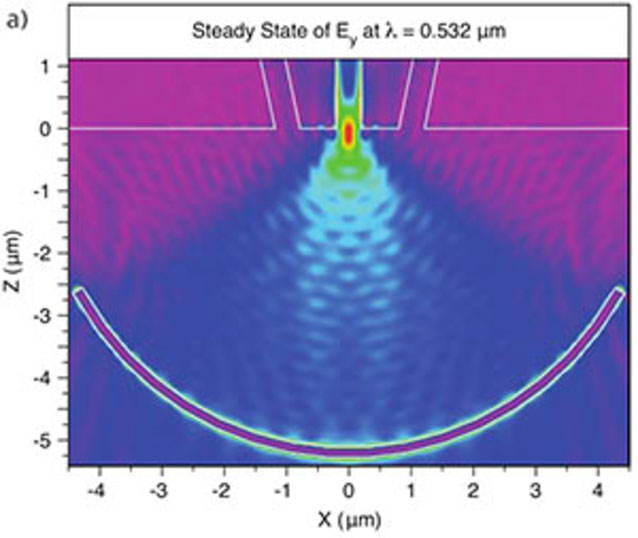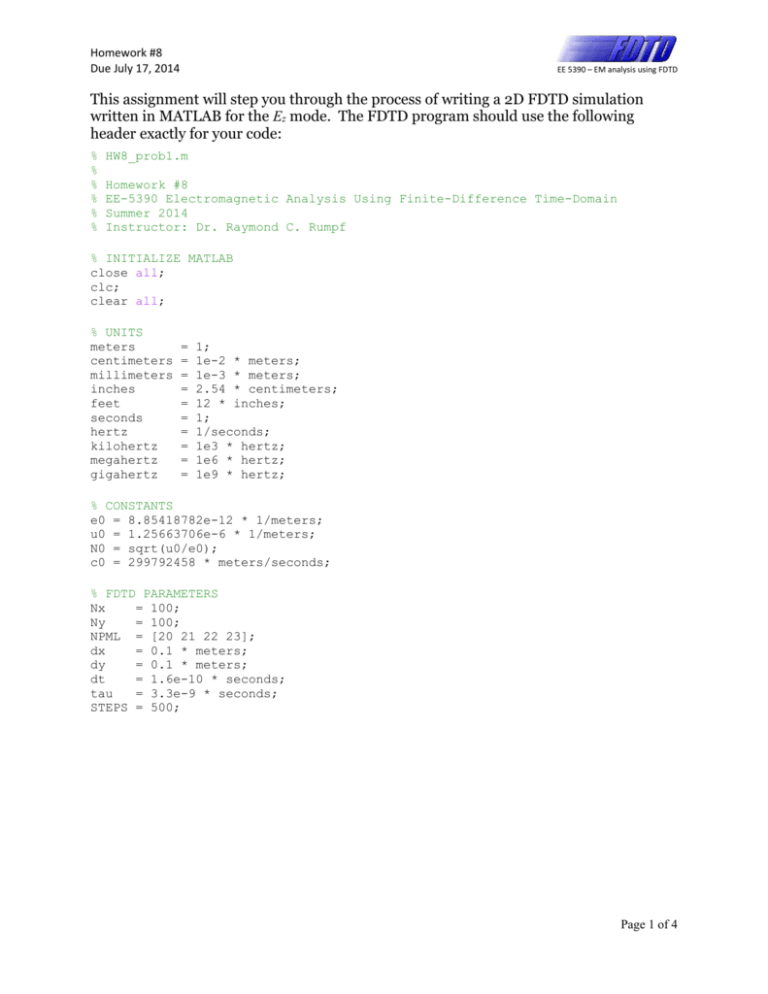

Due to its excellent programmability and remarkable computational power for parallel executions, CUDA has gained tremendous popularity in the scientific computing society. In 2006, NVIDIA developed a general-purpose parallel computing architecture called compute unified device architecture (CUDA) that leverages parallel compute engine in NVIDIA graphic processor unit (GPU) to solve many complex computational problems. This approach can deal with objects with arbitrary surfaces, and the formula deductions and calculations are simple. A last approach is conformal grid technology. The subgrid technology can greatly improve the calculation accuracy and efficiency, but it is also easy to generate reflection waves at the interface of the coarse and fine grids. Another approach is to adopt subgrid technology, such that the irregular shape target area uses a subdivision grid, and a normal grid is adopted for other areas. For complex problems, the computational resources are difficult to meet. There are three main methods for improving the accuracy when determining the electromagnetic response of a simulated irregular shape target: one is to increase the density of the discrete grids however the computation and time also increase correspondingly.

The accuracy and efficiency of forward model are not only related to the performance of the algorithm itself, but also related to computer acceleration technology and modeling method. However, the FDTD method requires large memory and calculation time in simulating GPR wave propagation in 2D complex underground structures due to the limitations of the CFL stability condition.
#Fdtd analysis software
The current state of the art in GPR-oriented FDTD approaches has developed rapidly for example, a software tool called GprMax has been successfully employed in the detection mechanism of GPR, a GPU-accelerated FDTD solver integrating it into open source EM simulation software was developed to modeling GPR, and a systematic framework for accurate and realistic numerical modeling of GPR for landmine detection has been developed. It uses time-step finite-difference to approximate the differential form of Maxwell’s equations for Faraday and Ampere’s laws and calculates the magnetic and electric field vector components at regularly arranged, distinct points in space. Among these, the FDTD method proposed by Yee in 1966 has been the most popular simulation tool due to its great stability and convergence. These include the ray-tracing method, the transmission-line-matrix method, the finite element method (FEM), the semianalytic mode matching algorithm, the pseudo-spectral method, the FDTD method, the Alternating Direction Implicit- (ADI-) FDTD method, and the symplectic method. Various approaches have been developed to simulate GPR wave propagation.

It can provide a way to explore the link between subsurface structures properties and GPR data. Numerical simulation of GPR electromagnetic wave propagation in underground structures is helpful to better explain the real GPR profiles. Because of these advantages, it has been widely applied to geological prospecting, civil engineering, highway reconnaissance, and many other areas.

Its advantages include being fast, continuous, high resolution and no damage. GPR is a nondestructive way to detect the internal material distribution of underground structure using electromagnetic waves. And the efficiency and accuracy of the proposed method are higher than the traditional FDTD method in simulating GPR wave propagation in two-dimensional (2D) complex underground structures. The numerical simulation results showed that CUDA-implemented conformal FDTD method could greatly reduce computational time and the pseudo-waves generated by the ladder approximation. In order to improve the accuracy and efficiency of FDTD simulation model, a parallel conformal FDTD algorithm based on graphics processor unit (GPU) acceleration technology and surface conformal technique was developed. However, the numerical accuracy and computational efficiency are not high because of the Courant-Friedrichs-Lewy (CFL) stability condition. The finite-difference time-domain method (FDTD) is the common numerical method studying the GPR wave propagation law in layered structure. Ground penetrating radar (GPR), as a kind of fast, effective, and nondestructive tool, has been widely applied to nondestructive testing of road quality.


 0 kommentar(er)
0 kommentar(er)
